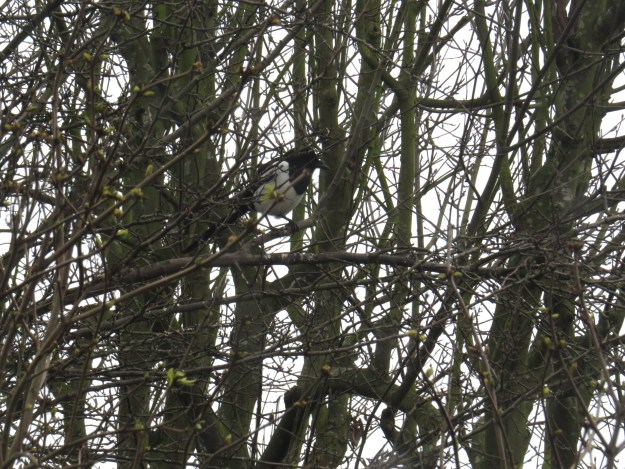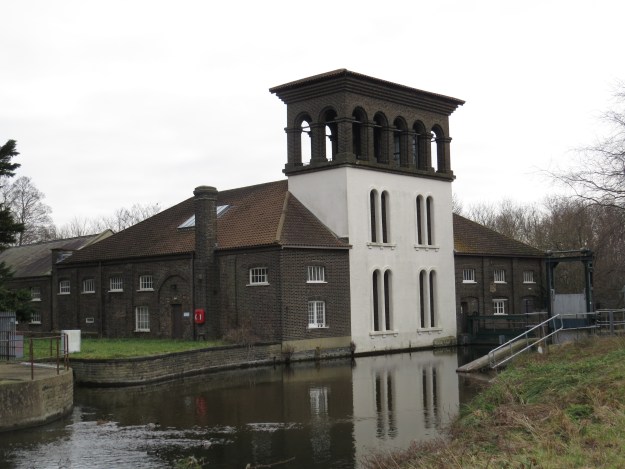
Dear Readers, I am still in the throes of year end but am determined to get out for a quick walk at lunchtime – there’s always something to see, and even old familiar sights, like All Saints here on Durham Road, look all the lovelier against a colour-washed blue sky. I dragged my husband across the road to examine the bulbs, and some of the daffodils are almost in flower already.


And then there’s the fact that all the bollards are upright, as opposed to reclining drunkenly to the horizontal having been backed into by a passing van.


And I rather think that this tree is an alder, though it isn’t marked as such on the London Tree Map. I could of course be wrong though – I’ll have to have a closer look next time I whizz past.

In sad news, the tree that was walloped and damaged when a skip was being loaded a year or so back has finally been cut down. It sustained a huge wound and as it wasn’t treated, the trunk started to rot.

The crab apple originally

Following the encounter with the skip

Today
It’s always a shame when a mature tree is cut down, especially when I suspect that if it had not been damaged, the crab apple would have survived for many more years. But accidents happen, our road is narrow and tricky to manoeuvre around, and everyone is under such pressure these days. And clearly you can’t have branches descending onto the noggins of innocent passersby. Plus, the street has received half a dozen new trees this year – although they’re just saplings at the moment, hopefully they’ll have a chance to mature and grow into fine specimens.

But, to end on a more cheerful note, I cannot pass this row of houses on Lincoln Road without smiling.

Each one has a presiding spirit above the doorway. There’s a very sad Poseidon…

..a chap with a very fine moustache…

and this lady, whose rather serious demeanour is offset by that splendid lipstick. I can just imagine someone standing on a stepladder, determined to give her a suitable starlet makeover.

And then, finally, I loved these rowan berries against the moss. It looks like game of bowls played by some mice.

And now, suitably buoyed up, it’s back to the spreadsheets. And goodness, it’s almost February! Soon year end will be over, and I’ll be able to get back to some sort of normality.






























































 There are still flocks of redwings about, and the sound of great spotted woodpeckers drumming – at one point there was quite a duet, with two males clearly trying to out drum one another in different parts of the cemetery. We saw two woodpeckers chasing one another like miniature white and red rockets. It really is all kicking off, even though January is a bit early for any serious breeding attempts yet. In one tree, two woodpeckers were chasing one another round and round a horse chestnut while a pair of parakeets sat serenely, one in a hole in the tree, another on a branch close by, as if to say ‘aha, you should have been a bit earlier’.
There are still flocks of redwings about, and the sound of great spotted woodpeckers drumming – at one point there was quite a duet, with two males clearly trying to out drum one another in different parts of the cemetery. We saw two woodpeckers chasing one another like miniature white and red rockets. It really is all kicking off, even though January is a bit early for any serious breeding attempts yet. In one tree, two woodpeckers were chasing one another round and round a horse chestnut while a pair of parakeets sat serenely, one in a hole in the tree, another on a branch close by, as if to say ‘aha, you should have been a bit earlier’.




